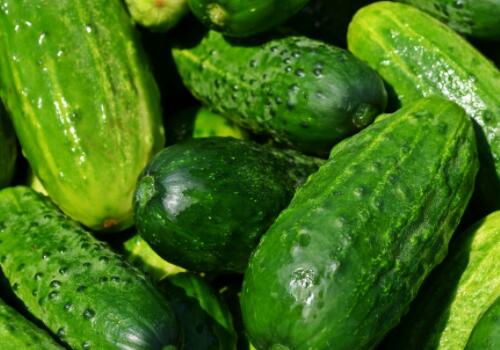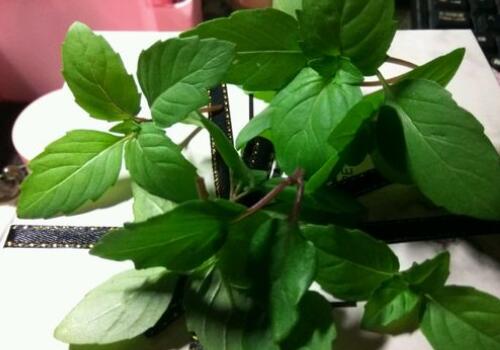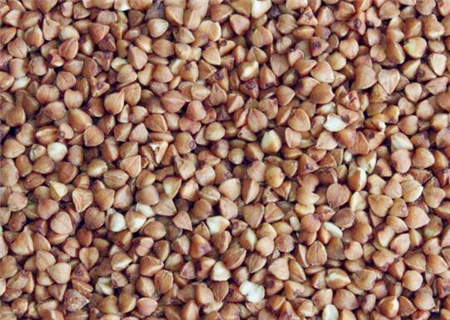How many jin of grafted cucumber per mu? What is the best way to graft? How is it grafted? Attached cucumber seedling raising method
Cucumber, also known as cucumber, thorn melon, king melon, Qin melon, cucumber, Tang melon, hanging melon, is widely cultivated in various parts of China, and many areas are cultivated in greenhouses or plastic greenhouses. How many jin of grafted cucumber per mu? What is the best way to graft? How is it grafted? What are the methods of raising cucumber seedlings? I learned from Mr. he, a cucumber grower, that cucumbers can generally be planted for two seasons in southern greenhouses, but there are also many grafted cucumbers that grow one season a year. The two seasons were planted at the end of February or early March in spring, the cucumber was listed in the first and middle of April, the melon seedlings were pulled out at the end of June, and the melon seedlings were planted in the middle of July to the middle of November in autumn. The average yield per mu is about 15000 jin in spring and about 12000 jin in autumn.

What is the best way to graft cucumbers?
The main results are as follows: 1. The main rootstocks used for cucumber grafting are black seed pumpkin, wasteland melon, and pumpkin varieties Xin Tuzuo and white chrysanthemum.
2. Cucumber grafting is a main technical measure to overcome continuous cropping obstacles, improve plant resistance, control cucumber Fusarium wilt and blight and obtain high yield in cucumber production and cultivation. The stress resistance of grafted cucumber is enhanced, and it has the characteristics of low temperature tolerance, high temperature tolerance, waterlogging tolerance, drought tolerance and so on. The grafted seedlings have developed root system, strong growth potential, normal development of lateral branches, stable melon and continuous stubble. The use of grafting technology in cucumber field production can achieve many advantages, such as increasing yield, preventing disease, improving cucumber stress resistance and so on.
How to graft cucumbers?
The methods of cucumber grafting include insertion method, leaning method, split method, splicing method and so on. However, the connection method and insertion method are the most commonly used because of their simple operation and high survival rate.
First, the method of insertion:
1. Oblique insertion method: the thumb and index finger hold the Hypocotyl of the rootstock, remove the growing point and two axillary buds with a knife or bamboo blade, then use the bamboo stick on the top surface of the seedling to close to the inside of the base of a cotyledon, and the stem is at an angle of 30 to 45 degrees, oblique to the lower part of another cotyledon, with a depth of about 5mm, it is appropriate to use the bamboo stick to pierce the rootstock epidermis without breaking it, and do not pull out the bamboo stick temporarily.
The cucumber seedlings were cut at an angle of about 30 °from the 1cm under the cotyledons (the side of the cotyledons), the first knife was slightly flat without truncation, turned over the stem, and then cut obliquely from the back, the cut was long 0.5~0.7mm, and the scion was cut into a wedge. Then pull out the bamboo stick on the rootstock and insert the scion into the oblique hole of the pumpkin. Make the rootstock match the two incisions of the scion. Cucumber cotyledons and pumpkin cotyledons are cross-shaped, clamped with grafting clips or wrapped with plastic tape.
2. Direct insertion method: remove the growth point and two axillary buds of the rootstock with a knife or bamboo stick blade, and insert the 0.5cm vertically at the center of the growth point with a bamboo stick slightly thicker than the cucumber stem (self-made, as thick as the scion embryo stem), and do not pull it out temporarily. Under the growing point of cucumber seedlings, the 1~1.5cm was cut at an angle of 30 °, showing an oval section with a long 0.4~0.5cm length. The bamboo stick on the rootstock was pulled out and inserted into the pumpkin stem. The direction of the rootstock and the cotyledons of the scion was in the shape of "ten". After spraying and purifying the water, place it in a small moisturizing arch shed. Maintain 95% humidity for the next 3 days, with a temperature of 25: 28 ℃ during the day and 18: 20 ℃ at night. There was a little ventilation after 4 days, and the film could be uncovered after 8 days. It can be planted after entering the three-leaf and one-heart stage in about 25 days.
Second, the method of relying on the connection:
1. Rootstock: remove the growing point and two axillary buds with a knife or bamboo stick blade. On the Hypocotyl at the ion leaf node 0.5~1cm, the blade and the stem are cut down at an angle of 30 °40 degrees to a maximum of 2pm 2, with a notch length of 0.5~0.7cm (no more than 1cm). The depth of the incision should be strictly grasped, it is easy to break if the incision is too deep, and the survival rate will be reduced if it is too shallow.
2. Scion: at the 1~2cm under the cotyledon, cut upward at an angle of 30 degrees from the bottom to the stem at a depth of 1 to 2, the cut length is 0.6~0.8cm (no seedling is cut and should be rooted), and the incision length is equal to that of the rootstock (not more than 1cm).
After the treatment of the rootstock and the scion, take the rootstock in one hand and the scion in the other, insert the tongue-shaped wedge of the scion into the incision of the rootstock, then clip the joint with a grafting clip or wrap it with a plastic strip, bury the root of the scion with soil, and cut off the base of the scion in about 20 days.
III. Advantages and disadvantages of the method
In production, these two grafting methods have their own advantages and disadvantages, and their advantages and disadvantages are mainly analyzed as follows:
1. Insertion method: the grafting method is to cut off the root of the scion cucumber and then obliquely insert it into the top production point of the rootstock pumpkin. The position of grafting scion is higher, far away from the ground, it is not easy to produce adventitious roots, and loses the purpose of disease prevention and cold prevention of grafting; in addition, the combination of scion and rootstock is strong, the scion is not easy to fall off, and the rootstock is not easy to break from the joint. However, because there is no root in the scion, the water loss and wilting phenomenon is easy to occur, and the survival rate is reduced. Therefore, the grafting method has higher requirements for grafting technology and management. It is not suitable to be popularized for novice grafts.
2. Leaning grafting method: the scion cucumber seedling with root and the rootstock pumpkin seedling are cut obliquely in the middle and upper part of the melon seedling and coincided with each other. The grafting method is grafting with roots, which is not easy to lose water and wilt, and the survival rate is higher, so the management requirements after grafting are not too strict, and it is easy to popularize. However, because the combination position of scion and rootstock is low, it is easy to be contaminated by soil, and it is easy to produce adventitious roots, which loses the purpose of disease prevention, cold prevention and yield increase of grafting. In addition, scions and rootstocks are easy to break from the interface, causing injury and death of seedlings; and the scion will be cut off after survival, which is more labor-intensive.
Attached: cucumber seedling raising method
Variety selection: select early-maturing, disease-resistant and high-quality varieties such as Changchun secret thorn, Jinza 2, Jinchun 2, etc.
1. Seedling raising period: raising seedlings in greenhouse in the first ten days of February.
2. Preparation of nutritious soil: the ratio is rotten organic fertilizer: garden soil: fine furnace ash = 5:4:1. Add 0.5 kg urea and 1-2 kg diammonium phosphate to every cubic meter of nutritious soil.
3. Soaking seeds to accelerate germination: the seeds were soaked for 4-6 hours, germinated under 25-30 ℃, and sprouted in 1-2 days.
4. Sowing: it can be directly seeded in the nutrition bowl or on the seedling bed. It should be kept 25-30 ℃ in daytime and 18-20 ℃ at night after sowing, 25-30 ℃ in daytime and 12-16 ℃ at night after emergence. The seedling age is about 40 days.
5, strong seedling standard: plant height 15-18 cm, 5-6 true leaves, leaf color dark green, bibcock extended, stem diameter 1 cm, short internodes, top flower with bud.
Time: 2019-04-09 Click:
- Prev

What is the difference between perennial basil and Schizonepeta tenuifolia? What is the efficacy? How to grow potted plants? How to apply fertilizer?
Basil is a fragrant plant for both medicine and food, which tastes like fennel, also known as nine-story pagoda, Jinbu, St. Joseph grass, sweet basil, orchid incense, like warm and humid climate. What's the difference between basil and Schizonepeta tenuifolia? What is the efficacy? How to grow potted plants? How to apply fertilizer? According to the data of Labiatology, basil has the character of dispelling wind and good spirits.
- Next

Is the annual herb buckwheat sweet? When will it be ready? When will it be harvested? (planting techniques in different regions are attached
In May 2018, the Ministry of Agriculture and Village issued technical guidance for the production of buckwheat in 2018, and put forward planting guidance for the eastern producing areas of Inner Mongolia, central Inner Mongolia, northwest Shanxi and Shaanxi-Gansu-Ningxia producing areas.
Related
- Fuxing push coffee new agricultural production and marketing class: lack of small-scale processing plants
- Jujube rice field leisure farm deep ploughing Yilan for five years to create a space for organic food and play
- Nongyu Farm-A trial of organic papaya for brave women with advanced technology
- Four points for attention in the prevention and control of diseases and insect pests of edible fungi
- How to add nutrient solution to Edible Fungi
- Is there any good way to control edible fungus mites?
- Open Inoculation Technology of Edible Fungi
- Is there any clever way to use fertilizer for edible fungus in winter?
- What agents are used to kill the pathogens of edible fungi in the mushroom shed?
- Rapid drying of Edible Fungi

